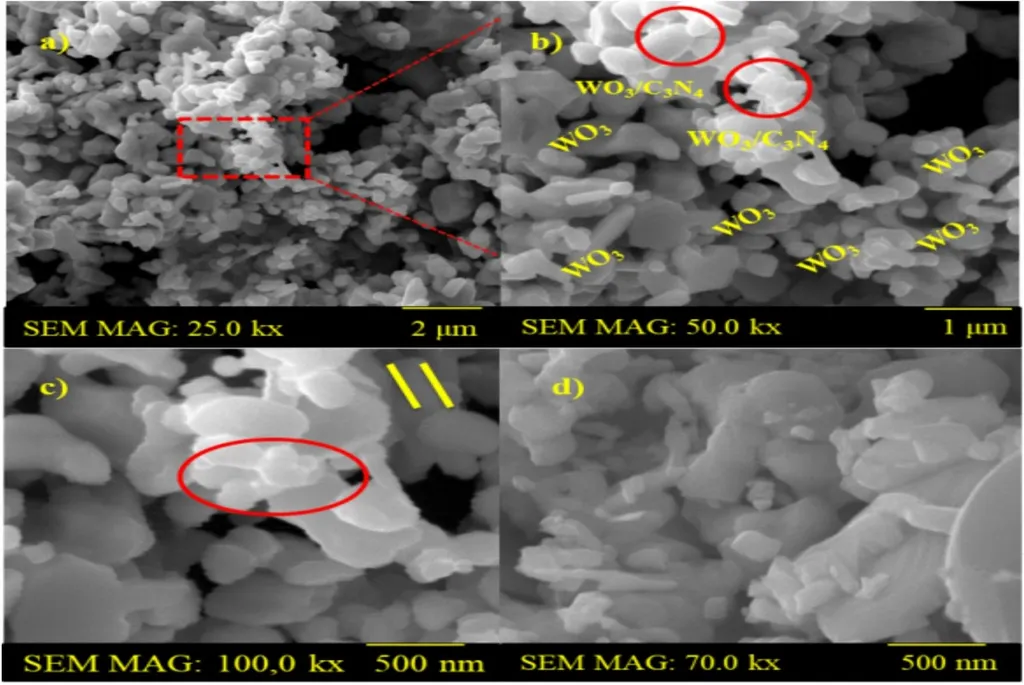In the relentless battle against antimicrobial resistance, a glimmer of hope emerges from an unlikely quarter: tungsten oxide nanocomposites. A recent study published in *Scientific Reports* has unveiled the potential of these nanomaterials, coupled with conventional antibiotics, to combat multidrug-resistant (MDR) Salmonella enterica strains. The research, led by Afshan Muneer from the Cholistan Institute of Biological Sciences at Cholistan University of Veterinary and Animal Sciences, could herald a new era in agricultural disease management.
The Houbara bustard, a vulnerable bird species, often falls prey to infections caused by MDR pathogens like Salmonella. This poses a significant challenge to wildlife conservation and the agricultural sector, where poultry health is paramount. The study evaluated the antibacterial potential and toxicity of tungsten oxide nanocomposites (WO3/C3N4, WNC) combined with antibiotics against MDR Salmonella enterica strains isolated from Houbara bustards.
The characterization of WNC through Fourier-transform infrared spectroscopy (FTIR) showed absorption at 799 cm−1, indicating W–O–W stretching and confirming WO3 integration. Scanning electron microscopy (SEM) revealed particle sizes ranging from 20 to 300 nm, while X-ray diffraction (XRD) patterns confirmed the crystalline nature of WNC. These findings lay the groundwork for understanding the material’s properties and its potential applications.
The antibacterial potential of these products was striking. The lowest minimum inhibitory concentrations (MICs) were observed in WNC combined with ciprofloxacin (16.74±4.76 µg/mL) and oxytetracycline (30.69±10.44 µg/mL). In contrast, WNC alone and in combination with penicillin or ampicillin exceeded 100 µg/mL. “The synergistic effect of WNC with certain antibiotics significantly enhances their antibacterial efficacy,” Muneer noted, highlighting the potential of these combinations to tackle resistant strains.
However, the study also delved into the toxicity of these nanocomposites. The toxicity assay showed that WNC combined with ampicillin significantly reduced mitotic and phase indices in a dose-dependent manner at 24 and 48 hours. All treatments exhibited significant dose-dependent genotoxic effects. “While the combinations are effective, their toxicity profiles need careful consideration to ensure safety for both the host and the environment,” Muneer cautioned.
The implications for the agriculture sector are profound. With antimicrobial resistance posing a growing threat to livestock and poultry health, the development of alternative therapeutics is crucial. The study’s findings suggest that WNC-antibiotic combinations could offer a viable solution, potentially reducing the reliance on conventional antibiotics and mitigating the spread of resistance.
Looking ahead, this research opens doors for further exploration. The potential to tailor nanocomposites for specific pathogens and antibiotics could revolutionize disease management in agriculture. As Muneer put it, “This is just the beginning. The field of nanotechnology holds immense promise for developing innovative solutions to combat antimicrobial resistance.”
In conclusion, the study published in *Scientific Reports* by Afshan Muneer and her team offers a promising avenue for addressing the challenges posed by MDR pathogens in agriculture. By harnessing the power of tungsten oxide nanocomposites, the agricultural sector may soon have a new tool in its arsenal to safeguard animal health and productivity.

